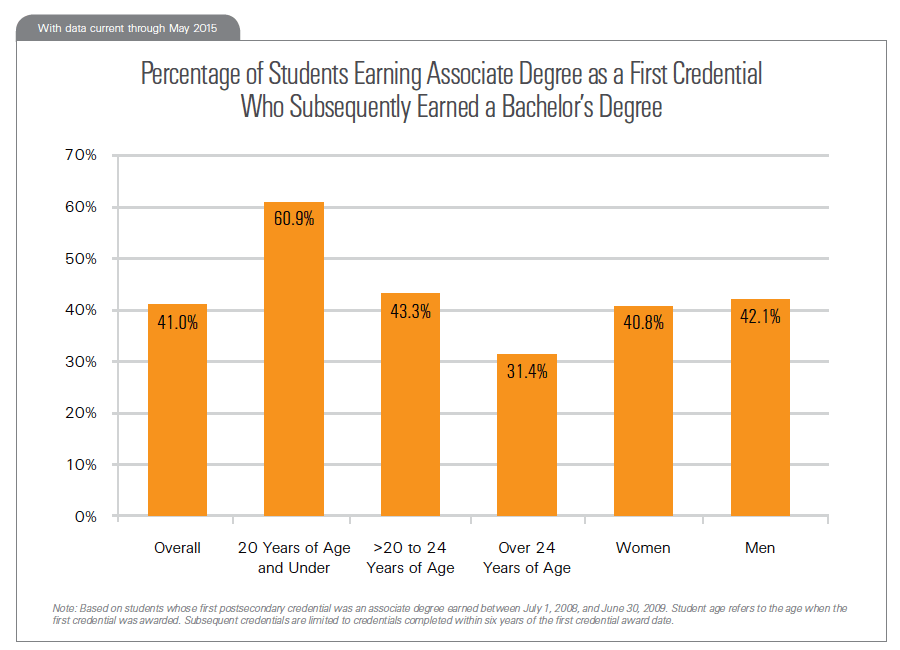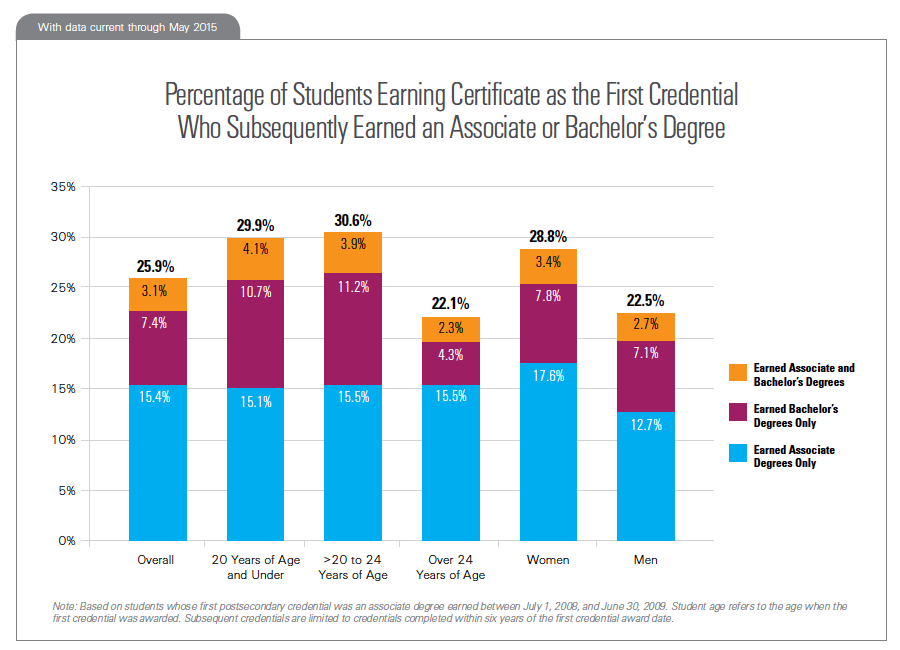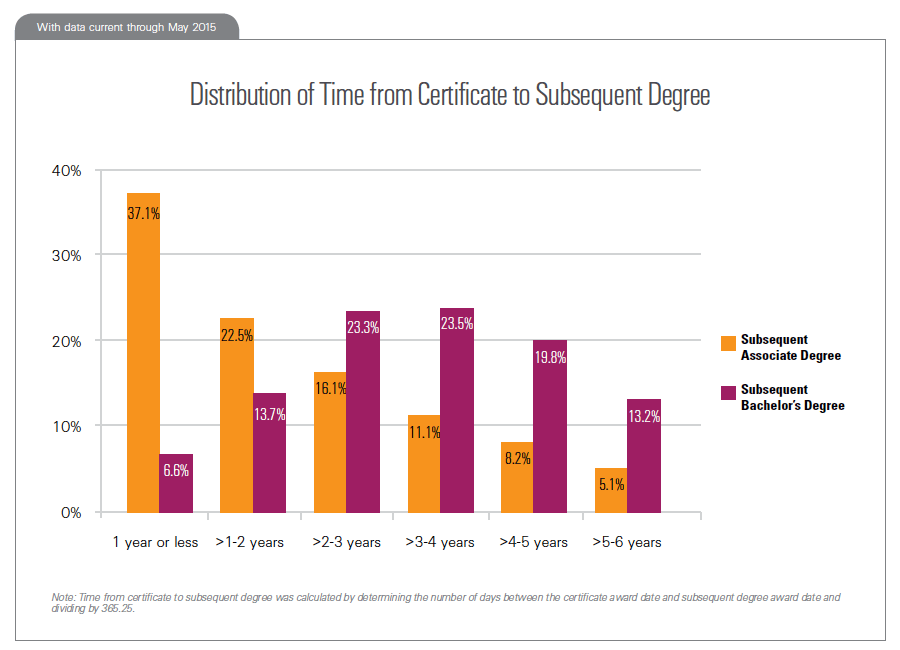
Degree Pathways – 2015
Of all associate degrees earned in 2008-09 that were reported to the National Student Clearinghouse, 488,046 were found to be the first postsecondary credential earned by a student. Forty-one percent of these students went on to earn a bachelor’s degree within six years.
Two in Five Associate Degrees Lead to Bachelor’s within Six Years
Of all associate degrees earned in 2008-09 that were reported to the National Student Clearinghouse, 488,046 were found to be the first postsecondary credential earned by a student. Forty-one percent of these students went on to earn a bachelor’s degree within six years. Over 60 percent of students who earned associate degrees at 20 years of age or younger went on to earn bachelor’s degrees within six years, the highest percentage of any age group. Analysis is based on degree records reported to the Clearinghouse through its DegreeVerify service. See below for more detailed information about the sample of postsecondary credentials included in this report.

Associate-to-Bachelor’s Takes 2.8 Years on Average
Of the 2008-09 associate degree recipients who went on to earn a bachelor’s degree, two-thirds did so within three years of earning their associate degree. The mean number of years from associate to bachelor’s degree completion was 2.8. Analysis is limited to bachelor’s degrees earned within six years of the associate award date. Calculation of mean time-to-degree excludes students taking longer than six years.

One in Four Certificates Lead to Associate or Bachelor’s within Six Years
Of all certificates earned in 2008-09 that were reported to the Clearinghouse, 201,493 were found to be the first postsecondary credential earned by a student. Almost 26 percent of these students went on to earn an associate or bachelor’s degree within six years. About 31 percent of students in the >20 to 24 age group went on to earn higher credentials, the highest percentage of any age group. Twenty-nine percent of women who earned a certificate as their first credential went on to earn higher credentials, compared to 23 percent of men.

Certificate-to-Associate Takes 2.1 Years on Average
Of the 2008-09 certificate recipients who went on to earn an associate degree, three-fourths did so within three years of earning their certificate. The mean number of years from certificate to associate degree completion was 2.1. Of the 2008-09 certificate recipients who went on to earn a bachelor’s degree, two-thirds did so within four years of earning their certificate. The mean number of years from certificate to bachelor’s degree completion was 3.4. Analysis is limited to associate and bachelor’s degrees earned within six years of the certificate award date. Calculation of mean time-to-degree excludes students taking longer than six years. Students who earned both associate and bachelor’s degrees are counted in the distributions for both degree levels.

Additional Notes on the Data
Analysis in this report is based exclusively on credentials reported to the Clearinghouse through its DegreeVerify℠ service. This applies to both the first postsecondary credential earned, as well as subsequent associate and bachelor’s degrees. Results are not adjusted to account for DegreeVerify participation rates.
The National Student Clearinghouse Research Center has estimated that credentials reported through DegreeVerify account for 68 percent of all educational certificates awarded by U.S. Title IV, degree-granting institutions, 77 percent of associate degrees, and 86 percent of bachelor’s degrees. These estimates are based on IPEDS counts of postsecondary credentials for all U.S. Title IV, degree-granting institutions. It should be noted that many certificates are also awarded by institutions classified by IPEDS as non-degree-granting, but these institutions generally do not participate in Clearinghouse services.
Analysis of subsequent associate and bachelor’s degrees is limited to degrees earned within six years of the student’s first postsecondary credential. Therefore, calculation of mean time-to-degree excludes students who will eventually earn credentials in seven years or longer. Including these students would increase the mean time to subsequent degree.
